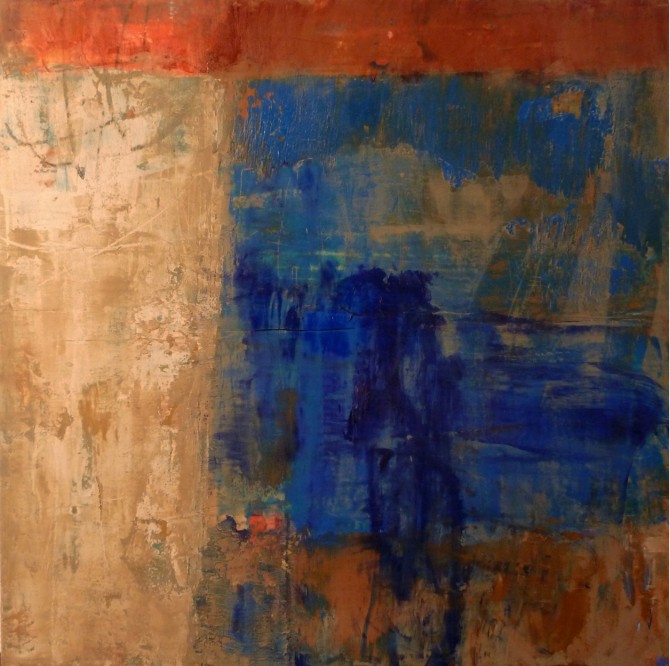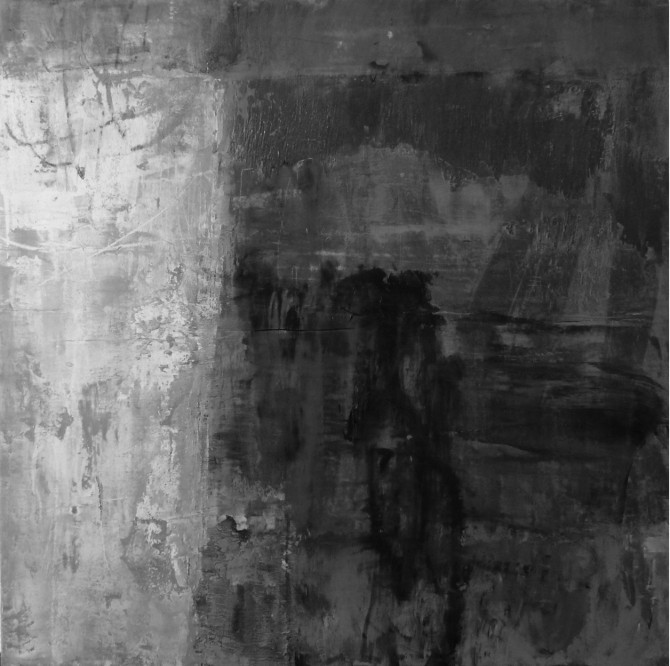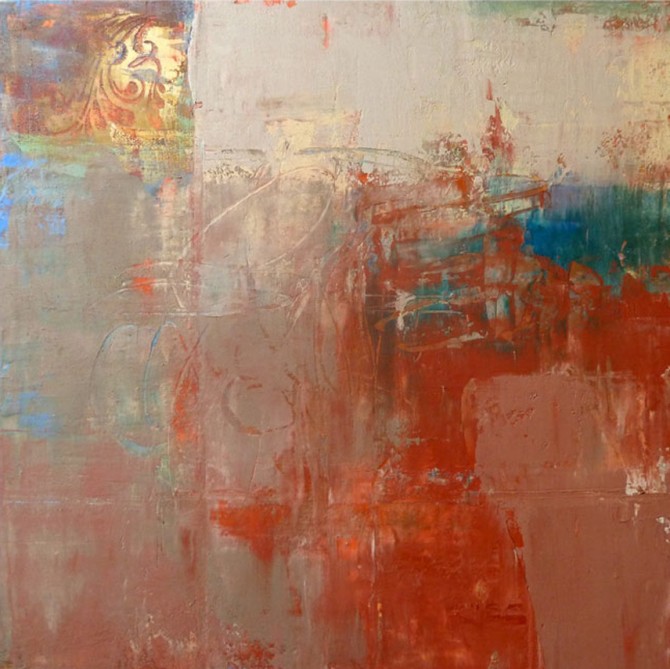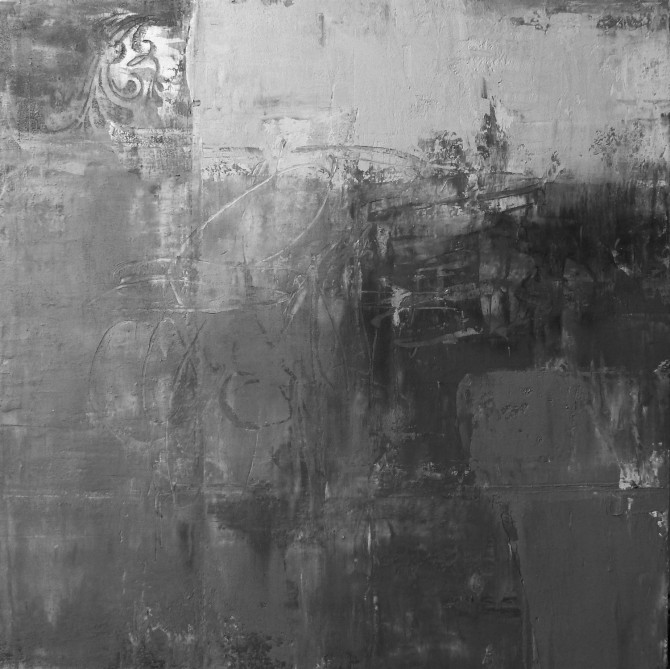The Dance of Love
Both light and shadow are the dance of love.
Rumi
I have been experimenting with the ways in which the fluidity of manipulating digital images shifts my perspective while in the process of creating paintings. When I see my works, constructed through many layers of color, change into black, white and grays with a touch of a computer option, it gives me a brand new insight into the space and design of the work. I am not sure why they sometimes look better to me in grays than they do in color. Maybe it’s just the fascination with seeing them so differently when altered into a grayscale mode via the never-ending wonders of Adobe Photoshop!
As much as I love color, I have also always been drawn to works reduced to more neutral and monochromatic values. Artists such as Cy Twombly, Antoni Tapies, and Stephen Croeser, a few favorites that come to mind, exude a visual strength through a limited palette in many of their works. While I often respond to the seduction and allure of color, I respect the restraint and elegance of less.
Sometimes people make a distinction between ‘value painters’ and ‘color painters.’I’ve worked for decades sitting comfortably in the latter camp. When thinking about visual opposites, I lean more towards warm and cool than light and dark. However, I find myself yearning to at least explore the other side where value shifts rein, if only to learn more about how color is functioning in a painting.
I am working from the premise that if the value range is wider, or at least more considered, the color is stronger. So, in the spirit of learning from what is unfamiliar, I have been using this photo manipulation tool in the midst of creating, in order to view the work through both an achromatic and chromatic lens. I appreciate seeing the same work in a new manner, and I am learning more about incorporating this process midstream to inform the next stages of layering paint.
I explore this shift back and forth in a few different ways. At times I start a piece, even one destined for full color, in a monochromatic values in the initial layers. In other paintings,
I document varying stages of works in process and look at them in both color and black and white versions that feeds ideas for the next layers. Also, actually looking at a grayscale and color versions side by side, I can compare both in relationship to one another. This interplay has enhanced my understanding and I appreciate its potential to chart visual and conceptual maps while making a painting.
My recent paintings are all made on panel with oil paint, cold wax, and other mixed media such as powdered marble, chalk, plaster, dry pigment, and gold leaf. Many unpredictable layers are developed through intuition, experimentation and chance. The process includes adding and subtracting paint, erasing, excavating, scraping, and improvisational mark making. Ultimately, I want these paintings to represent the beauty that is found in objects and places that are continuously shifting within the transformation of time.




